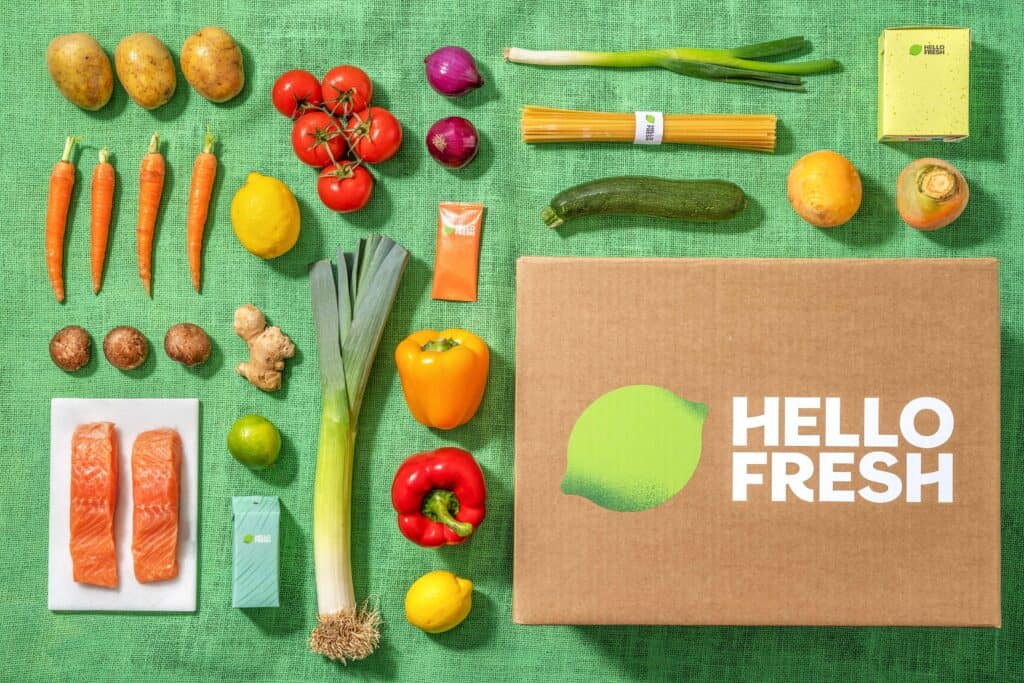
HelloFresh is a global food solutions group and the world’s leading meal kit company. The HelloFresh Group consists of six brands that provide customers with high quality food and recipes for different meal occasions. The company was founded in Berlin in November 2011 and operates in the USA, the UK, Germany, the Netherlands, Belgium, Luxembourg, Australia, Austria, Switzerland, Canada, New Zealand, Sweden, France, Denmark, Norway, Italy, Ireland and Spain.
In Q1 2023 HelloFresh delivered over 278 million meals and reached 8.11 million active customers. HelloFresh SE went public on the Frankfurt Stock Exchange in November 2017 and is currently traded on the MDAX. Tilman Eichstädt, COO upstream at HelloFresh, explains how they are rethinking packaging.

When dealing with food, what are the main packaging challenges?
Packaging is a key tool to ensure food quality and safety for customers. While HelloFresh is committed to avoiding packaging wherever possible across all of our regions and climates, some packaging is necessary to ensure product freshness and prevent food waste. Packaging provides transport protection, hygiene and freshness preservation. But when it comes to food, packaging needs to be tailored to the individual needs and forms of produce, depending on outside temperatures.
At the same time food packaging is strictly regulated and sometimes required by law out of consideration for allergens. One example is celery which is an allergen which means packaging is necessary for safety reasons.to avoid the risk of unwanted cross-contamination within our production facility, the vegetable is packaged separately. As we operate six brands in 18 markets, there is a need for a global packaging strategy in order to ensure our customers get their ingredients delivered in the best possible quality.
What are HelloFresh doing to ensure packaging isn’t oversized?
Our team of packaging experts is constantly working to make our packaging as resource-efficient as possible. In 2021 we launched the first version of our Dynamic Packaging Configurator (DPC), an in-house built digital tool that enables HelloFresh to optimise and predict its exact packaging demand even with ever-increasing product complexity. The DPC bundles all data points from production, procurement, logistics and even temperature with the goal of calculating the optimal packaging size and coolant quantity.
To provide an appropriate amount of data for the DPC, more than 19,000 ingredients were measured by hand in all markets. The exact volume of the packaging was then calculated, which included the geometric shape of the produce, the true maximum internal volume, and some extra space for safety reasons. These data points help us to calculate the perfect packaging for each box. An application programming interface then sends the necessary data for the optimal packaging of each meal kit to our employees so that customers do not receive half-filled boxes and meal bags.
How important is technology in making packaging fit for purpose and sustainable?
Looking at the Dynamic Packaging Configurator, the importance of technology to make packaging better and more sustainable is undeniable. Technology helps with collecting and processing data in order to make packaging more cost efficient, but it also helps to decrease its environmental footprint. While switching to more paper based packaging solutions – like our padded mailer as well as paper based packaging for dried goods like rice, grains, pasta and spices – technology was a key tool to collect and analyse customer feedback data about their product journey.
When it comes to innovating packing materials, like inventing ways to use organic materials, which we are also experimenting with, technology is a key driver. Another example would be the topic of insulation: Technological advancements help develop new materials and composites, offering enhanced properties for packaging. This includes biodegradable and compostable alternatives to traditional plastics, like our Padded Mailer, as well as lightweight materials that reduce environmental impact through minimised material usage and transportation costs.
Is the unboxing experience becoming increasingly important in packaging design?
Yes, this experience has become essential for customers. While consumers continuously demand less packaging, especially plastic, the unboxing experience of a HelloFresh box needs to be exciting. In recent years, there has been a growing emphasis on creating memorable and engaging experiences for consumers throughout their entire product journey, including the moment they receive and open the box. The rise of e-commerce and social media platforms has played a significant role in elevating the importance of this unboxing experience. People often document and share these experiences on social media, which can influence others’ perceptions and purchasing decisions.
To enhance the HelloFresh unboxing experience, our packaging designs have incorporated various elements. Besides continuously working on reducing packaging and switching to paper based packaging, unique and aesthetically pleasing designs are important: We strive to create visually appealing packaging that stands out. These include graphics, innovative structural designs, and the use of premium materials. Furthermore, added value and functionality plays a very important role. Our ice packaging serves a dual-purpose, such as being repurposed as a reusable cooler for a picnic in the park. Lastly, thoughtful presentation and protection is a key aspect as well: Our packaging design considers both aesthetics and functionality.
Packaging is of course part of a wider ecosystem, what other changes have HelloFresh made to be more sustainable?
Sustainability is a key part of everything we do at HelloFresh, and we are committed to providing a more sustainable way to buy, prepare, and enjoy food. To further minimise our environmental impact we are following a holistic approach focussing on avoiding and reducing carbon emissions – including the ones caused by packaging. Our continuous efforts have led to a 12% reduction of packaging weight per meal in 2022 compared to 2020. In the same period of time we reduced the amount of plastic packaging by 34%. HelloFresh recently committed to science based emission reduction targets in line with the Science Based Targets initiative.
Alongside this process, HelloFresh follows its strategy of avoiding and reducing emissions by making operations more energy efficient and transitioning to renewable energy. The share of green energy used in HelloFresh’s distribution centres and offices in 2022 increased to 53%, up from 50% in 2021 and 35% in 2020. We are also investing in solar panels, electric vehicles used for delivery of our products, and food waste management. Furthermore, reducing food waste continues to be an integral part of HelloFresh’s sustainability approach. In 2022, 12,040 tonnes of our unsold edible food was donated to charities.